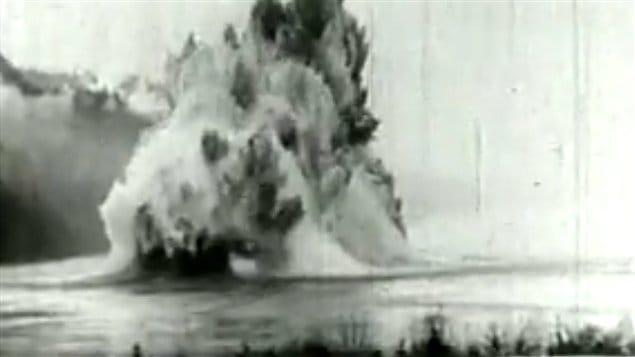It is considered as one of the largest planned, non-nuclear explosions in history. On April 05, 1958, it was also the first events to be carried coast-to-coast live on television in Canada.
At low tide, lurking just a couple of metres under the surface, the twin peaks known as Ripple Rock were deadly hazards to shipping in the southern entrance of Seymour narrows between Vancouver Island and the mainland, near Campbell River. The underwater feature got its name from the ripple on the surface caused by the strong currents flowing past the structure.
From1878 until its destruction in1958 it claimed over 100 lives and sunk or damaged over 100 vessels.
By 1931, recommendations were being made to blow the top off the underwater peaks.
Several attempts were tried to drill from the water above, but these failed.
Then a proposal was made to drill a 174 metre vertical shaft down from nearby Maud Island, drill 762 metres across to the rock, then two shafts up 91 metres towards the tops of the peaks. Some 1200 metric tons of high explosive were placed at the tops of the shafts.
At 9:31 AM on April 05, 1958, the explosives were detonated, displacing over 600-thousand metric tons of rock and water.
The successful effort lowered the height of Ripple Rock to about 45 metres below the low-tide mark.
Original CBC B&W archival footage
WINGS OVER CANADA – youTube video with colour archival film







For reasons beyond our control, and for an undetermined period of time, our comment section is now closed. However, our social networks remain open to your contributions.